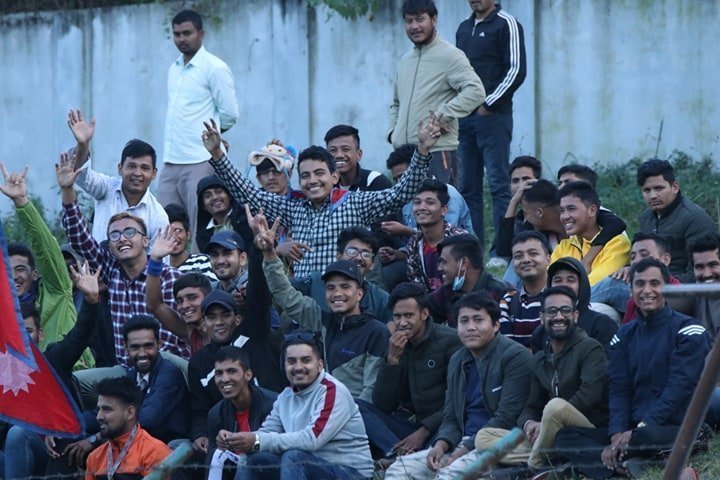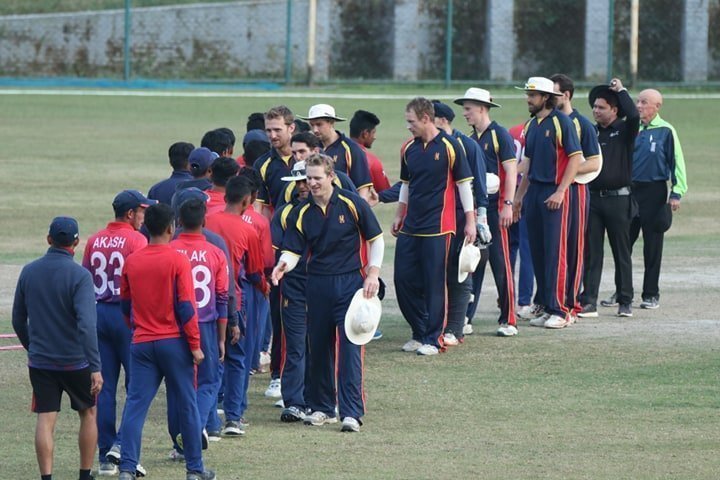
When Umesh Patwal announced his resignation as Nepal coach on the eve of their home Tri-Series last month, pockets of fans and critics in the country exhaled in relief and vented their thoughts on social media, making the ex-Afghanistan coach a scapegoat for the national team’s struggles.
A former batting coach of Afghanistan, and with experience in the IPL, Patwal was appointed in June last year, still stifled by the ban of CAN. Blamed for issues outside his control, he was unable to produce results overnight with the issues surrounding the country’s cricket. Nepal’s poor performance without him at the ACC Eastern Region T20 this week in Thailand would also help his case.
A lift in the ban late in 2019 was not an immediate alleviation of issues in cricket in the country. Just because Nepal tick the boxes of an ICC representative’s sheet of criteria, it does not mean normal transmission from there on. A newly-formed CAN are, and will be for a long time, picking up the pieces, trying to link everything back together.
Crucially, the biggest problem in Nepali cricket is not leadership and coaching issues at the top, but rather the lack of cricket with consequence in the levels below, and a lack of development in coaching and tuition in the younger, formative years. Multiple T20 franchise leagues are scattered across the calendar, but there is no routine and ultimately no continued paths of development. The stop-start nature of Nepal’s domestic cricket fails to provide players an opportunity to retain knowledge and experience in their own respective games. Nepali players will rub shoulders with Full Member talent at the upcoming Everest Premier League, but just how much knowledge can be soaked up in two weeks?

Education professionals harp on about the science of knowledge retention. While theories differ between academics, one sentiment shared by all of them is that routine is paramount in learning and development.
Cricket, and specifically batting, is full of shortcomings when we think about development in this way. Think of every net session you’ve ever had. Every ball is a two-part process. Someone bowls a ball, and someone at the other end plays that delivery.
Here lies the issue: we see the consequences of a good or bad delivery, but when the ball hits the side of the net, we do not necessarily understand the consequences of the shot. A cover drive might always find the hands of a fielder. A ball in the air may have been caught in the deep. An edge may or may not have carried to a slip fielder. Teams try to simulate by discussing imaginary fields set, but nobody knows for sure how a shot would end up.
For the bowlers of the Nepal national team who have performed well, they are always honing their bowling no matter how they prepare. Throw in Sandeep Lamichhane’s exposure to franchise cricket to add to his preparation and the stocks are strong.
An example of Nepal’s poor preparation on the batting side can be seen in Haroon Arshad’s spell of 5-16 at the ACC Eastern Region T20 Tournament a couple of days ago.
Every wicket is caught in the deep with players not able to execute lofted shots, taking on fielders rather than finding space between those placed outside the circle. Had those shots been in a net session, there is every chance the batsmen are there thinking they’ve hit one ten metres over the rope.
The Cricket Association of Nepal could go out and hire the best coach in cricket’s history, hand him or her an endless supply of Bradley Cooper’s Limitless pills, all the money in the world, and they still wouldn’t be able to fix Nepal’s batting, because the problem does not fall on the shoulders of the person named the national team coach. In fact, even the players could be excused for their poor execution. To the outside, it’s glaringly obvious that Nepali players look underdone almost every time they go out to play international cricket. It is masked at home when their conditions and the home crowd boost their chances of victory, but any play away from home ends in disappointment, and thousands of fans back home smack their laptop down to sleep in frustration. Other teams in the region have improved, leading to tougher qualification paths for international competitions.
So how does CAN turn things around? The problem doesn’t start at the TU Ground, or the various grounds around the Associate world where Nepal plays. It starts at grounds around the country, and a push for a continuity of cricket throughout the time available, to give every player time in the middle, and therefore the chance to retain the knowledge they gained from the match before. This technique should then move up to support Nepal’s elite players.

Rupahendi could be the only district in the country to have a 50-over cricket season, alongside a promotion/relegation system. Top of a newly-installed CAN agenda should be a centralised system of 50 and 20-over cricket across the dry months to ensure consistent playing time. Above, you would hope that a domestic 50-over competition, pitting the country’s best against each other, provides the backbone of domestic play. CAN could create windows for the T20 leagues already up and running, and put every batsman under the pressure to perform. It’s the performance in difficult scenaries that will blood the next generation of talent.
For all the talk of finding a super coach for the national team, it is the coaching of players in their junior, formative years, that is so pivotal in turning good players into great players. It was not Patwal or Pubudu Dassanayake’s responsibility to make wholesale technical changes, but rather to tinker with tactics, study opposition and to formulate concise game plans. Dassanayake enjoyed a great record with the team from 2011 to 2015, when the system was not stricken by an ICC suspension. With prepared players at his disposal, he could move ahead and focus on dealing with the opposition, rather than internal flaws.
So, with an idea of what a national team coach does, who should it be to put the plans in motion to deliver success? Even a coach with Full Member success, for all their credentials, may not be the solution if they have no experience in Associate cricket. Rumours of Full Member coaches have excited the fans, though the likes of Dougie Brown or a Dassanayake return are a better fit. Brown managed a side that eked out results for a team missing a spine of players, and Dassanayake’s results for the USA team given their off-field issues almost push his case stronger than his achievements for Nepal. Not blessed with carpet-like outfields and freeways for pitches, low-scoring matches require a different style of thinking.
While the potential of Nepali cricket is unquestioned and largely untapped, to reach the next level in the international game, it will take a staggered approach, making improvements at every level. To compensate for the lack of domestic cricket, CAN could strive to organise warm-up matches on both foreign and home tours to ensure players are tuned up before they play in tournaments of high consequence. Below, it’s a case of forming unified competition and coaching practices to produce future generations of talent. Measures need to be made now to make up the ground lost.
Keep up with news and events from cricket’s new world on Facebook and Twitter pages.
Looking for audio content on the emerging game? Add the Emerging Cricket Podcast to your favourites on Apple, Spotify and Podbean.







What a Brilliant Article Daniel Beswick sir !